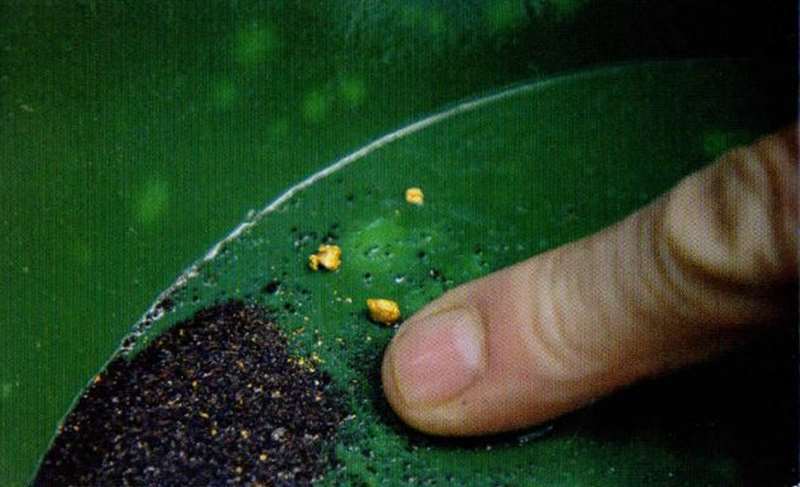Guide to Recreational Prospecting in Victoria


Research by the Geological Survey of Victoria suggests there may be more than 75 million ounces of undiscovered gold across Victoria. This is about the same amount of gold produced in Victoria since 1850.
Recreational prospecting under a miner's right is a low impact way of looking for gold or gemstones in the Victorian bush. It combines opportunities to enjoy the great outdoors with occasional Eureka moments.
What's more you'll be getting out and about in some of the state's beautiful rural and regional areas.
Searching for gold, minerals and gemstones, also known as fossicking, is permitted in our state forests and regional parks and some national parks, state parks and waterways. Activities are also permitted on private property as long as you have permission from the landholder.
This guide will help you to understand all that you'll need to know to try your hand at one of Victoria's oldest recreational activities.
It will explain:
The guide will help you to do the right thing and maybe find that gold nugget.
What do I need to go prospecting?
A miner's right is required for recreational prospecting in Victoria. This is a document allowing you to search for gold, gemstones and other minerals.
You can purchase a miner's right online, with the process taking about three minutes to complete.
A miner's right must be carried with you while prospecting. Earth Resources Regulation oversees recreational prospecting in Victoria, with inspectors frequently conducting spot checks to ensure activities are performed properly, safely and without harm to the environment.
What can I use when recreational prospecting?
You can only use hand tools while exploring for minerals under a miner's right.
You cannot use mechanical equipment or explosives to excavate the ground.
When recreational prospecting you must not damage vegetation or disturb any Aboriginal or culturally historic places.
Can I prospect in waterways?
Recreational prospecting is permitted around some waterways in Victoria, However, there are many rivers, streams and lakes where it is not allowed. If accessing a waterway through private property permission is required. A list of waterways where recreational prospecting is not permitted is available from earthresources.
How do I minimise my footprint when prospecting?
To minimise impacts on the environment always keep vehicles on public tracks and roads, take all rubbish home, don't damage vegetation, backfill any holes you've dug and replace leaf litter.
Want to learn from those in the know?
Recreational prospecting is a great social activity, with significant historic ties to our past. Many individuals choose to enjoy the Victorian bush and share experiences and knowledge. Victoria is home to an enthusiastic network of recreational prospectors, many of them are members of the Prospectors and Miners Association of Victoria (PMAV).
Staying safe when prospecting
Check for the latest fire and emergency warnings and advice at emergency.vic.gov.au. Let someone know your plans and be prepared, learn more at police.vic.gov.au/outdoor-and-bush-safety. For more helpful information to keep you safe, visit resources.vic.gov.au/licensing-approvals/fossicking/fossicking-safely.
Recreational prospecting is permitted in State Forests and in designated areas within the following national, state, historic and heritage parks:
Designated areas within these parks can be located by contacting Parks Victoria on 13 1963.
Fast Facts
Nicknamed Friday's Joy, a large gold nugget weighing 4.1kg was unearthed in central Victoria in 2016. Buried 30cm below the ground, the nugget was found by a long-term enthusiast who had been prospecting recreationally on weekends for over a decade.
Small-scale mining in Victoria can still result in some big Eureka moments too. In early 2019 an 80-ounce gold nugget now worth $200,000 was discovered near Dunolly while filming the program Aussie Gold Hunters. Later that year, on Mother's Day, a family discovered a $35,000 gold nugget while walking their dog north of Bendigo.
All minerals in Victoria belong to the Crown, even on private land. A miner's right transfers the ownership of any minerals found while recreationally prospecting to the finder and is required even when exploring on your own land.
There are currently over 50,000 valid Victorian miner's rights.
Five life-changing gold discoveries in the golden triangle
MOLIAGUL'S 'WELCOME STRANGER' GOLD NUGGET
The 66kg 'Welcome Stranger' is one of the most famous gold nuggets to be found in the Central Goldfields Shire. It was discovered by Cornish miner John Deason on 5 February 1869 who was working in Bulldog Gully near Moliagul and found it lodged in a chunk of quartz just 3 cm below the surface.
BEALIBA GOLD NUGGET
The 22oz Bealiba gold nugget was found near the town of Bealiba on 26 June 1957 by Arthur Stewart, the owner of a small property in the area. He had stopped at the side of the road to repair the chain on his bicycle - which he was riding because his car had earlier broken down when he spotted a glint of gold in a chunk of soil along the roadside.
TARNAGULLA TREASURES
In 2020 Bendigo-based brothers-in-law, Brent Shannon and Ethan West, along with Ethan's father, Paul, found two substantial nuggets while prospecting near Tarnagulla as part of the TV show Aussie Gold Hunters. The two nuggets had a combined weight of 3.5kg, and were valued at approximately $350,000 AUD at the time.
WEDDERBURN'S 'HAND OF FAITH' NUGGET
The 'Hand of Faith' nugget was found by Kevin Hillier in bushland behind the old Kingower Primary School on 26 September 1980. Weighing in at just over 27kg, it is the world's largest gold nugget found using a metal detector.
GOLDEN TRIANGLE 'LUCKY STRIKE' NUGGET
In March 2023 it was reported that an amateur gold prospector had discovered a quartz rock embedded with gold at an undisclosed location within Victoria's 'Golden Triangle. Weighing 4.6kg it contained 83 ounces of gold.









